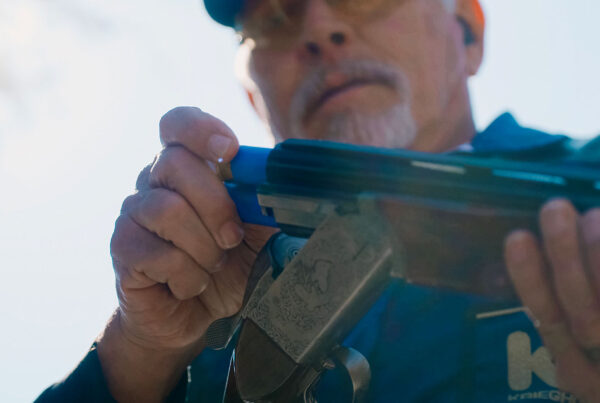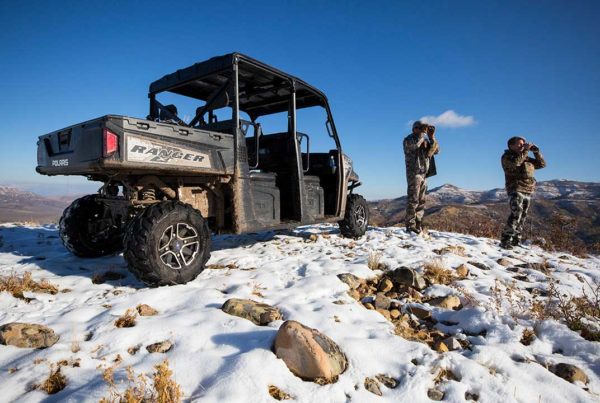
According to the latest data from NSSF and Forbes, the number of gun manufacturers has surged by 25.8% since 2012. Standing out and getting the attention of your prospective customers has steadily gotten more difficult over the past four years, especially for companies just starting out.
As I discussed in my last article, 7 Ways to Deepen Your Firearms Digital Marketing Footprint—more and more content is being created in the hunting and firearms industry, and we are eventually reaching a state called “content shock,” —if we haven’t already. As we get closer to content shock, brands will need to create 10x better content than their competitors or risk losing out on cost-effective content marketing opportunities to build their audiences through SEO and social media channels.
Early adopters of content and inbound marketing have benefitted immensely. Just look at Beretta. Or how Stag Arms used their inbound marketing efforts to rank for the keyword “AR15,” which gets over 110,000 visits per month. Although many segments of the industry still exist to take advantage of content, others will become more saturated and harder to leverage.
If you’ve found yourself in a highly competitive category (e.g. MSRs, Optics, Self-Defense or Hunting)—I want to discuss a new marketing tactic taking shape called “native advertising” and how this emerging trend can help you build your brand and tap into audiences more efficiently.
 1. What is native advertising?
1. What is native advertising?
First, let’s unpack the word “native,” so it’s not so confusing. Native means to belong to. It means being a part of something as if it’s supposed to be there. So let’s say a gun company wanted to place a native ad on Guns&Ammo.com (G&A). G&A has over 115K followers on Twitter and 786K on Facebook and gets over 1,129,000 visits per month. (Source: Outdoor Sportsman Group)
The gun company would first write in the style that G&A readers are accustomed to. They would make it look the same as well. Think fonts, colors, style, branding etc. So, in the end, you have an entertaining, helpful and relevant piece of content (video, blog or infographic) that looks like it came from G&A but is really from the gun manufacturer.
But wait, isn’t this sponsored content or what is called an advertorial? Not really, here’s why.
Almost half of consumers have no idea what native advertising is and of those consumers who do, 50% are skeptical. (Source: Wordstream) It also allows the gun company to tap into G&A’s audience with the goal of looking like a trusted piece of content from G&A rather than an untrusted advertorial or sponsored piece.
The key difference is that the native ad looks like it came from the publisher, not the advertiser. This breaks through peoples’ B.S. detectors and garners brand trust to a group of prospective customers the gun company otherwise would not have gotten access to.
2. Benefits of native advertising
Today’s businesses are seeing a shift in how consumers prefer to learn about brands. Click-through rates for banner ads were at 9 percent in 2000; today, they’re less than 1 percent. (Source: Forbes) Which is why content has become so effective. As a result, companies have turned to native advertising to promote their brands. So far, it’s proving more successful than traditional online advertising:
- People view native ads 53 percent more frequently than traditional ads.
- Native advertising can increase brand lift by as much as 82 percent.
- Purchase intent is 53 percent higher when consumers click on native ads instead of traditional ads.
- Native ads containing rich media can boost conversion by as much as 60 percent.
- The native advertising industry will reach $4.6 billion in revenue by 2017.
- 57% of publishers have a dedicated editorial team to create content readers will care about, leaving publishers in full control, not brands, which ultimately benefits readers.
- People view native ads 53% more than banner ads.
3. Best practices for native advertising
According to Gemini, Yahoo’s native advertising platform—there are eight best practices marketers should be aware of when composing native ads. These are imperative, as the FCC is cracking down on native advertising because some can be seen as deceptive.
- Use people-based images
- Showcase your logo
- Add a “Sponsored” label to video ads
- Place the “$” symbol and a CTA on native mobile ads
- Trim native video ads to 15 seconds
- Add a brand mention
- Opt for auto-play, making sound an option
- Provide an option for “more”
And for an extra boost, try native video.
In a case study by Nielsen and Sharethrough, native video advertising outperformed pre-roll ads for five advertisers, regardless of the campaign’s category or marketing objective. For instance, the findings from the test campaign, whose primary marketing objective was to drive brand favorability, showed that:
- Native ads generated 82% brand lift among users exposed to the ads.
- Pre-roll units generated 2.1% brand lift among users exposed to the ads.
According to Chad Pollitt, in his ebook Native Advertising Manifesto, which I highly suggest you check out, says:
Sponsored content and native advertising does for B2B marketers what display advertising can do for B2C brands – drive ROI-producing traffic at scale. Cost per clicks or cost per thousand impressions are generally much less for native advertising.
David Ogilvy, the “father of advertising,” once said, “It has been found that the less an advertisement looks like an advertisement and the more it looks like an editorial, the more readers stop, look and read.”
This is precisely what native advertising and sponsored content does for top funnel content marketers. It’s ideal, too, because it’s exactly what these marketers want from their content – to be read.
Tradeshow, email, print, and video/television advertising continue to be the mainstay of how firearm and hunting manufacturers create demand in the marketplace. But with the influx of new companies and increased competition—native advertising will become a valuable option for savvier marketers in the coming years.





